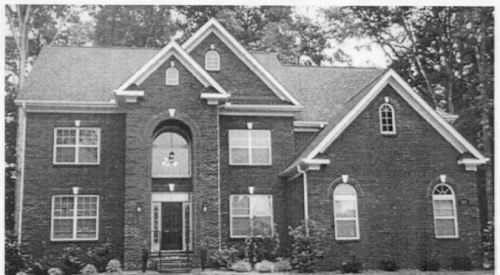|
Heather McCune's Editorial Archives
|
Imagine this:
Someone takes a liking to the officially licensed Starter T-shirt rendered to commemorate the NBA Finals and decides to use the design to sell a few T-shirts of his own.
Or someone records a Billy Joel song or publishes an Andy Rooney column as his own--without attribution, permission or paying for the privilege.
To be sure, the lawsuits would be flying. That much is clear. What's less clear is why home builders and consumer alike feel free to use an architect's designs which are, in fact, subject to the same copyright laws as Starter T-shirts, Billy Joel songs and Andy Rooney columns.
A recently settled lawsuit involving a copyrighted design by architect Matthias Jans, ARA, is again shining light on an old industry problem.
In layman's terms, copyright laws state that when a builder or consumer purchases a set of plans from an architect, he or she is paying for the right to use those plans once. Unless there is some formal agreement otherwise between the builder and architect, the architect retains all rights to the plan including its future reproduction and use.
How often do builders and consumers either purposely or unwittingly violate architects' copyrights? It's hard to tell because the only incidents recorded and retold occur when people actually get caught.
"How often it happens when people don't get caught is an entirely different matter," says intellectual property rights attorney Mark Liss, partner in the Chicago-based law firm of Leydig, Voit & Mayer.
That being said, the amended copyright law (circa 1991) has gone a long way toward offering architects more protections. While patent and trademark infringement cases are still far more prevalent, the number of architect-related copyright infringements cases are growing.
"I suspect if you ask most architects, they'll tell you it's a huge problem and that it is getting bigger by the day. In fact, Scholz Homes, a leading national supplier of custom home plans, has an entire legal staff devoted to infringement cases," said Matthias Jans, ARA, himself an award-winning architect whose designs have been pirated many, many times.
"Just today, someone sent me an advertise-ment that featured a rendering of one of my plans. Even the rendering itself in the advertisement came out of this office," Jans says.
For those builders and consumers who do get caught, the consequences can be significant, Liss adds. "Certainly, builders can be expunged of any profits. They may even be liable for the other side's attorney fees and/or incur additional damages if the copyright was registered prior to the infringement."
Likewise, consumers, too, could be in for some legal troubles of their own, especially if they knowingly used plans without having first secured the architect's permission.
"In theory, even innocent consumers could face some repercussions," Liss explains, adding he's aware of several cases where architects have sued homeowners as well as the builder.
"While none of those consumers were found liable, by the time the cases dragged through the courts and they had spent thousands of dollars defending themselves, it's hard to say there were no consequences," Liss says.
Heather McCune is the Editor-in-Chief for Professional Builder and Luxury Home Builder. Please email her with any comments or questions regarding her column.









